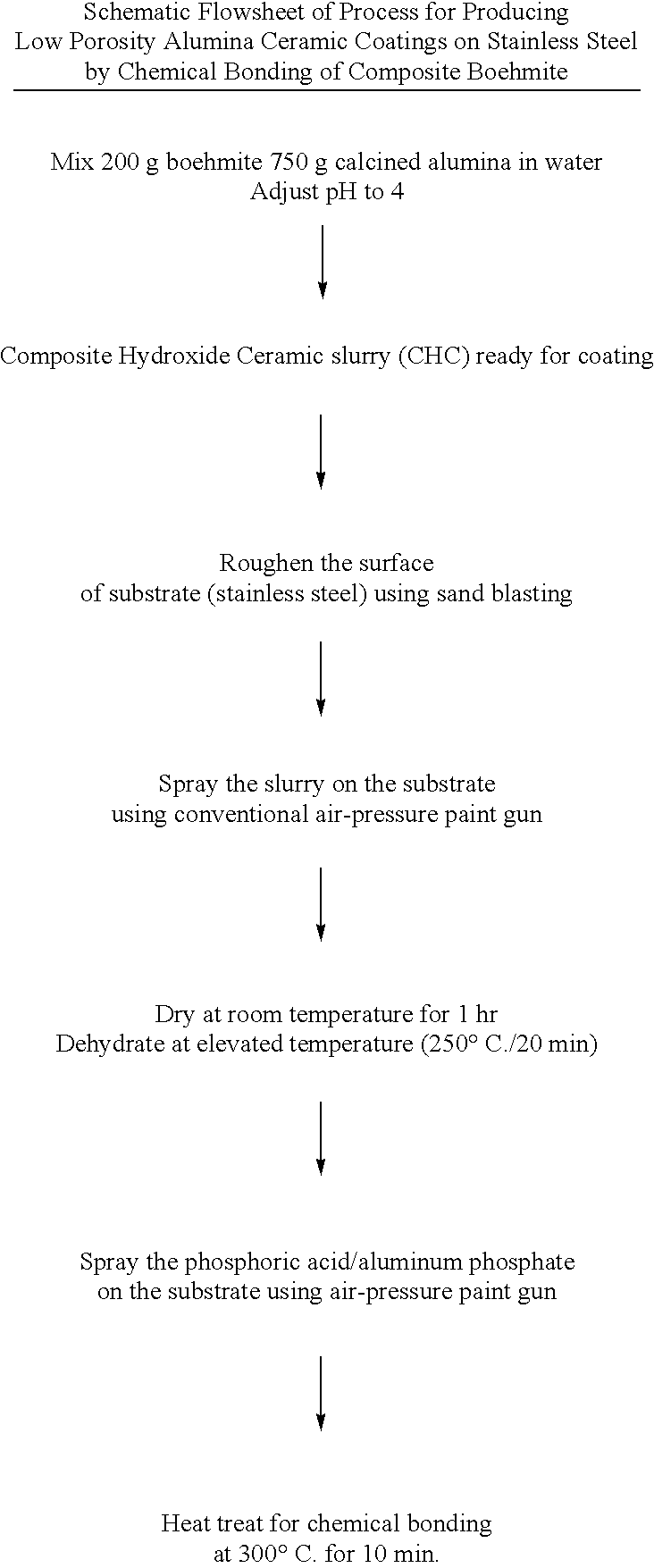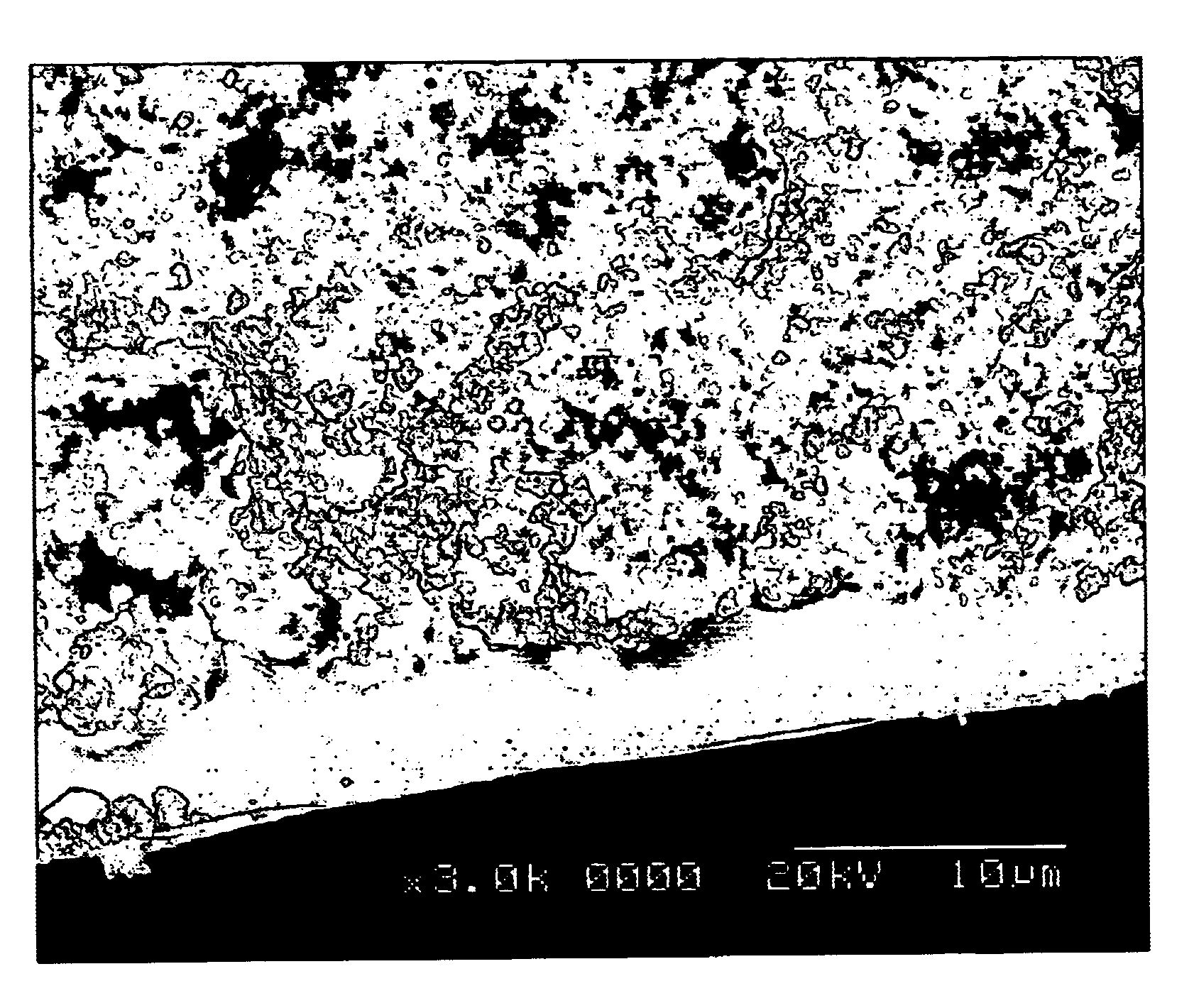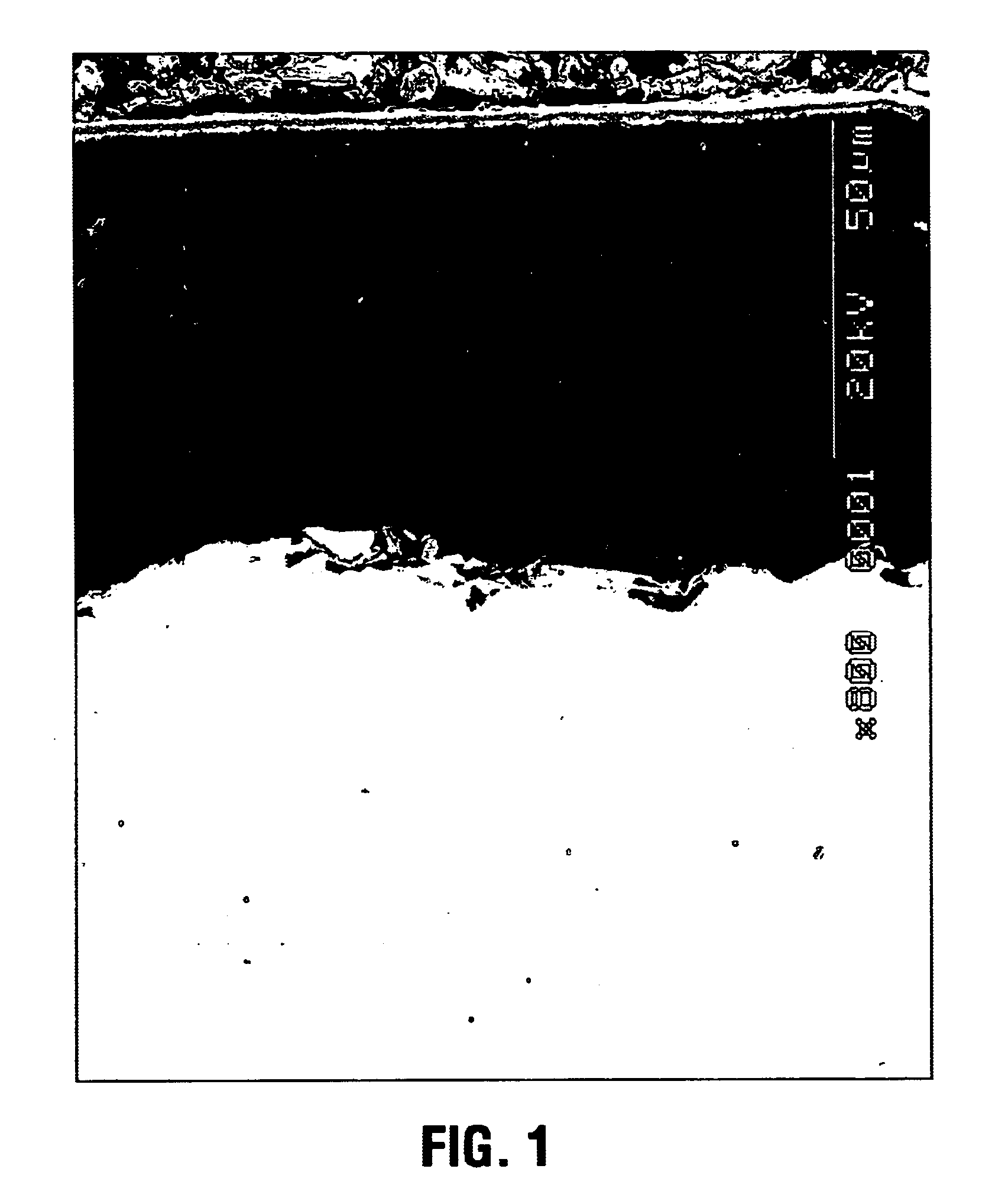Process for making chemically bonded composite hydroxide ceramics
a technology of composite hydroxide ceramics and hydroxide ceramics, which is applied in the direction of impression caps, dental prosthetics, coatings, etc., can solve the problems of refractory phosphates, such as aluminium phosphate, that are formed at relatively low temperatures, and can not be processed in the manner of chc ceramic coatings on most metals, and achieve excellent environmental protection, chemically bonded composites, and excellent quality. , the effect of reducing the shrink
- Summary
- Abstract
- Description
- Claims
- Application Information
AI Technical Summary
Benefits of technology
Problems solved by technology
Method used
Image
Examples
example 1
General Example 1
Processing of Chemically Bonded Hydroxide Ceramic
The coating slurry was prepared by mixing 200 g of aluminum hydroxide powder (boehmite AlOOH, equivalent to aluminum oxide monohydrate Al.sub.2 O.sub.3. H.sub.2 O) and 750 g of alpha alumina powder (average particle size about 0.5 .mu.m), in 1 liter of distilled water. The slurry acidity and viscosity was adjusted to approximately pH=4 using 1 M nitric acid. At this stage the slurry viscosity was approximately 20 mPa.s. The slurry was deposited on a substrate at room temperature by spray-coating, dip-coating, spin-coating, and electrophoretic deposition. The coating thickness varied between approximately 10 .mu.m and 3000 .mu.m, depending on the method of deposition. The coatings were subsequently dried in air at room temperature for about 1 hr (thinner coatings) and 4 hrs (thicker coatings) and then calcined at 250.degree. C. for 20 min, then cooled to room temperature. The heat treatment can be performed in an oven,...
example 2
Chemically Bonded Hydroxide Ceramic Coatings Deposited on Cold Stainless Steel Substrates
The coating slurry was prepared by mixing 200 g of aluminum hydroxide powder (boehmite) and 750 g of alpha alumina powder (average particle size about 0.5 .mu.m), in 1 liter of distilled water. The slurry acidity and viscosity was adjusted to approximately pH=4 using 1 M nitric acid. At this stage the slurry viscosity was approximately 20 mPa.s. The slurry was deposited on stainless steel solid substrate at room temperature by spray-coating, dip-coating, spin-coating, and electrophoretic deposition. The coating thickness varied between approximately 5 .mu.m and 1000 .mu.m, depending on the method of deposition. The coatings were subsequently dried in air at room temperature and then calcined at 250.degree. C. for 10 min, then cooled to room temperature. Subsequently the resulting porous coatings were infiltrated by 50% phosphoric acid and reheated to 300.degree. C. for 10 min. The resulting coat...
example 3
Chemically Bonded Hydroxide Thick Ceramic Coatings Deposited on Hot Stainless Steel Substrates
The coating slurry was prepared by mixing the powders of 150 g aluminum hydroxide (boehmite), 500 g zirconia (average particle size about 1.5 .mu.m), and 300 g alumina (average particle size about 0.5 .mu.m), in 1 liter of distilled water. The slurry acidity and viscosity was adjusted to approximately pH=4 using 1 M nitric acid. At this stage the slurry viscosity was approximately 20 mPa.s. The slurry was deposited on stainless steel solid substrate at 300.degree. C. by spray-coating, and the substrate temperature was maintained for 10 minutes after deposition, then cooled to room temperature. Subsequently the resulting thick (0.1-5 mm) porous coatings were infiltrated by 50% phosphoric acid and reheated to 300.degree. C. for 10 min. The resulting coatings were suitable for thermal barrier coatings (TBC) and die coating for metal casting. The resulting coatings had high thermal shock resist...
PUM
| Property | Measurement | Unit |
|---|---|---|
| temperature | aaaaa | aaaaa |
| temperature | aaaaa | aaaaa |
| temperature | aaaaa | aaaaa |
Abstract
Description
Claims
Application Information
 Login to View More
Login to View More - R&D
- Intellectual Property
- Life Sciences
- Materials
- Tech Scout
- Unparalleled Data Quality
- Higher Quality Content
- 60% Fewer Hallucinations
Browse by: Latest US Patents, China's latest patents, Technical Efficacy Thesaurus, Application Domain, Technology Topic, Popular Technical Reports.
© 2025 PatSnap. All rights reserved.Legal|Privacy policy|Modern Slavery Act Transparency Statement|Sitemap|About US| Contact US: help@patsnap.com



